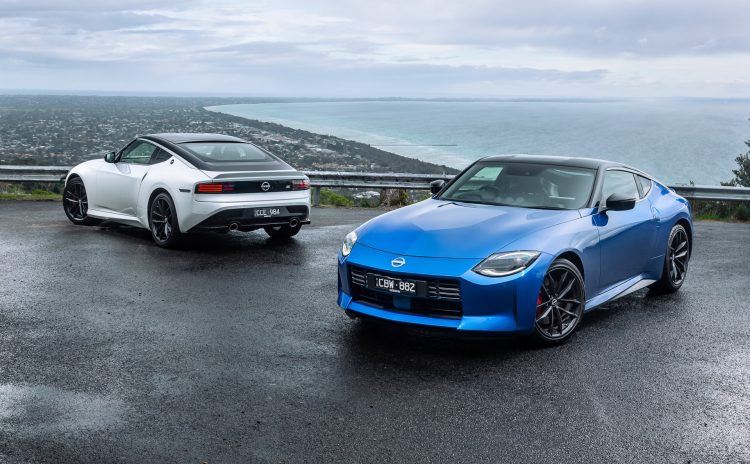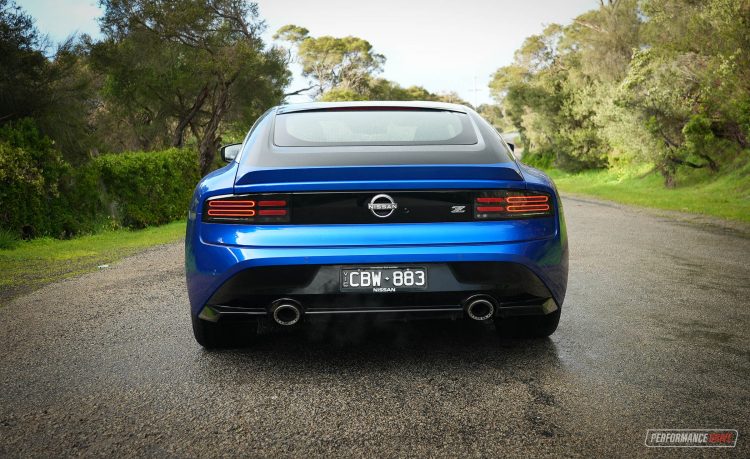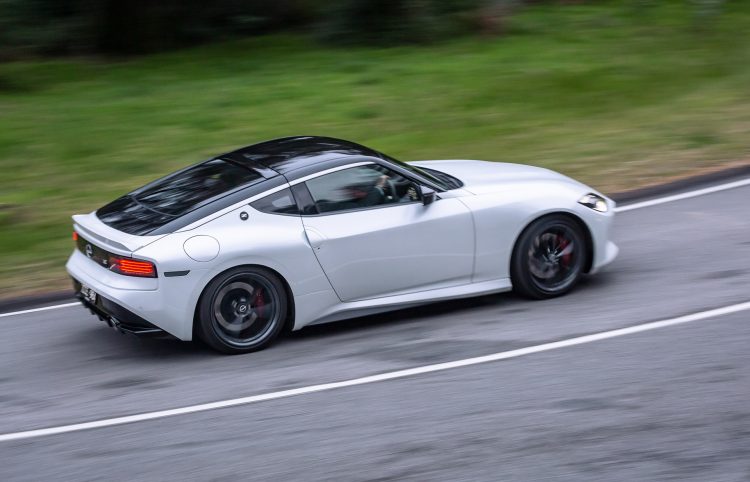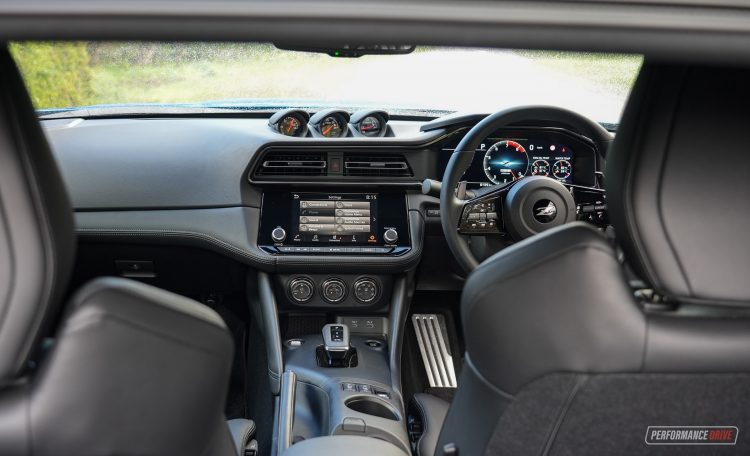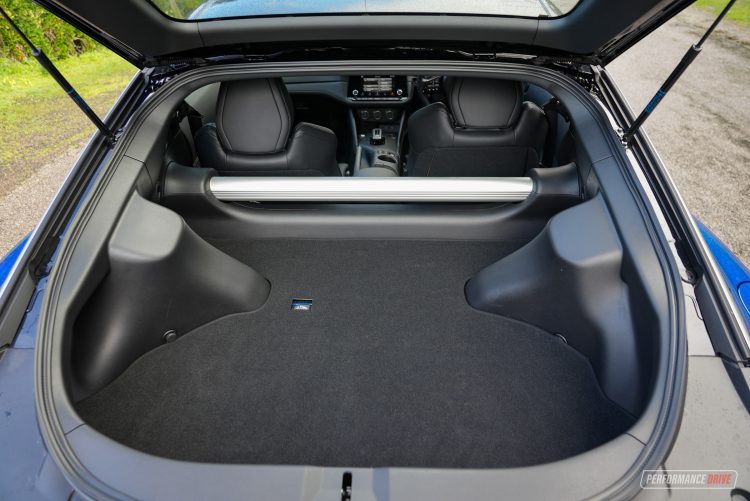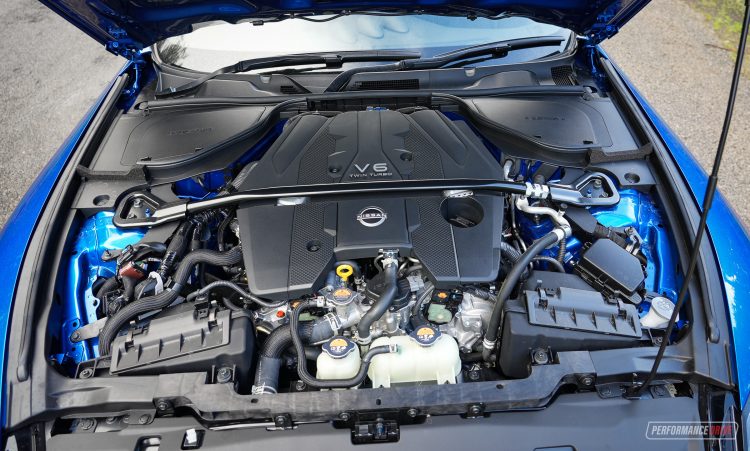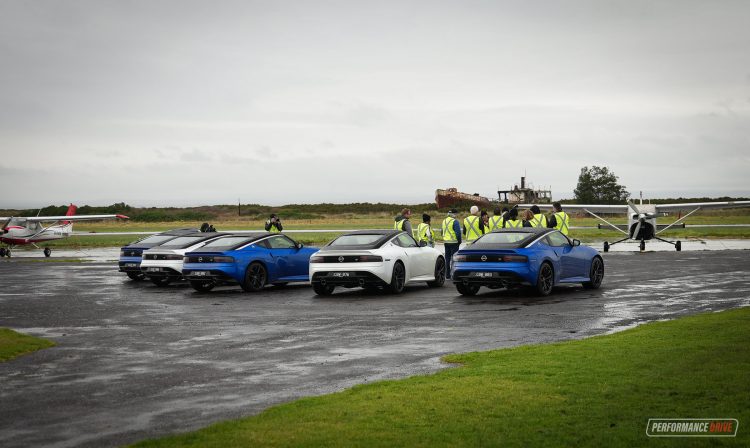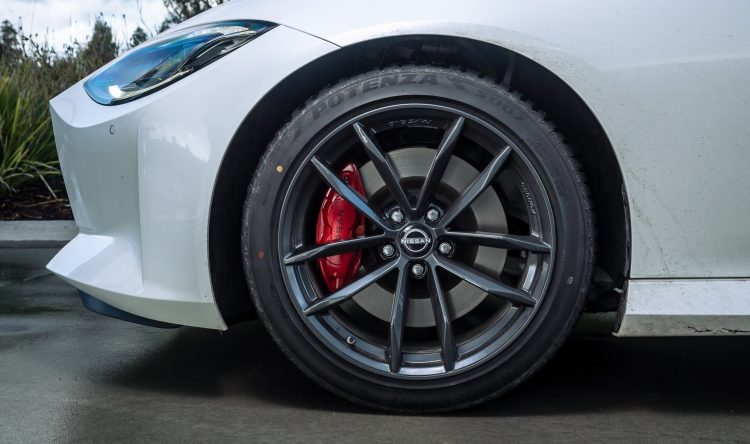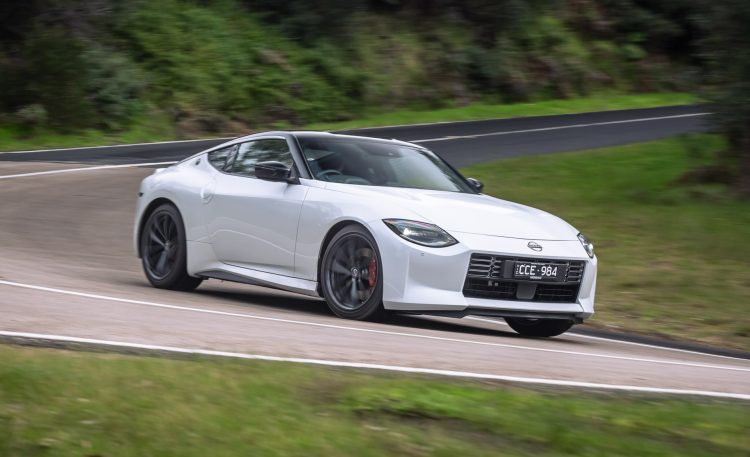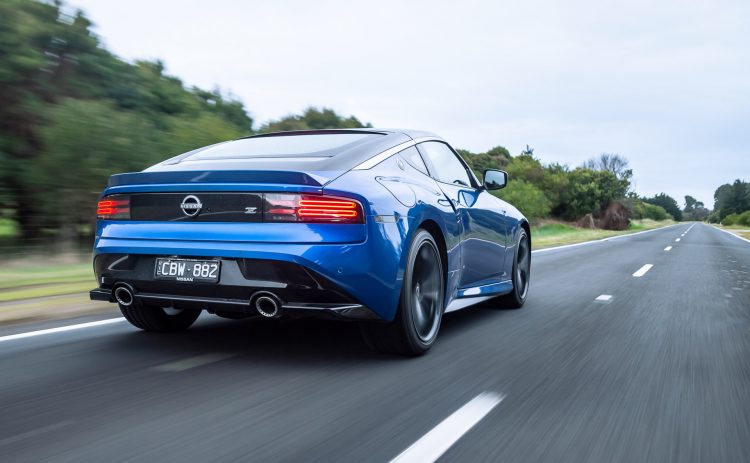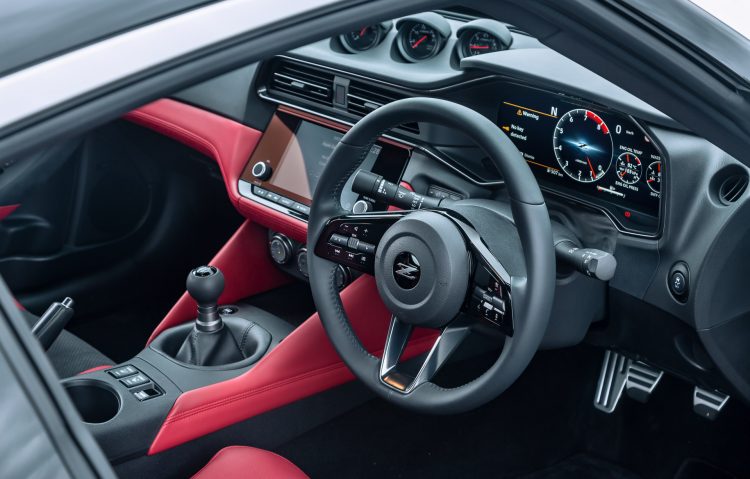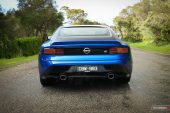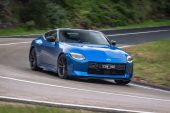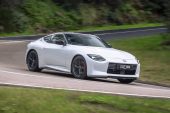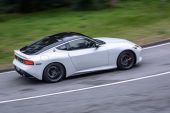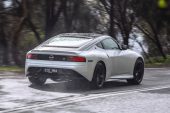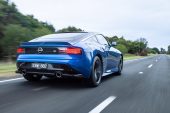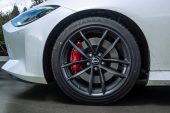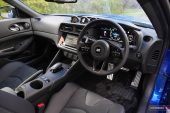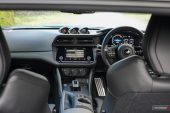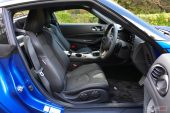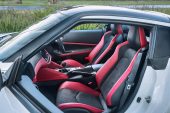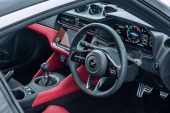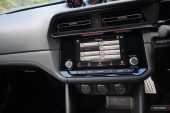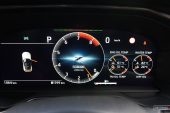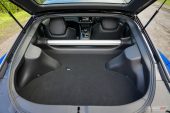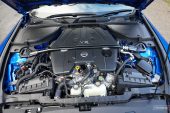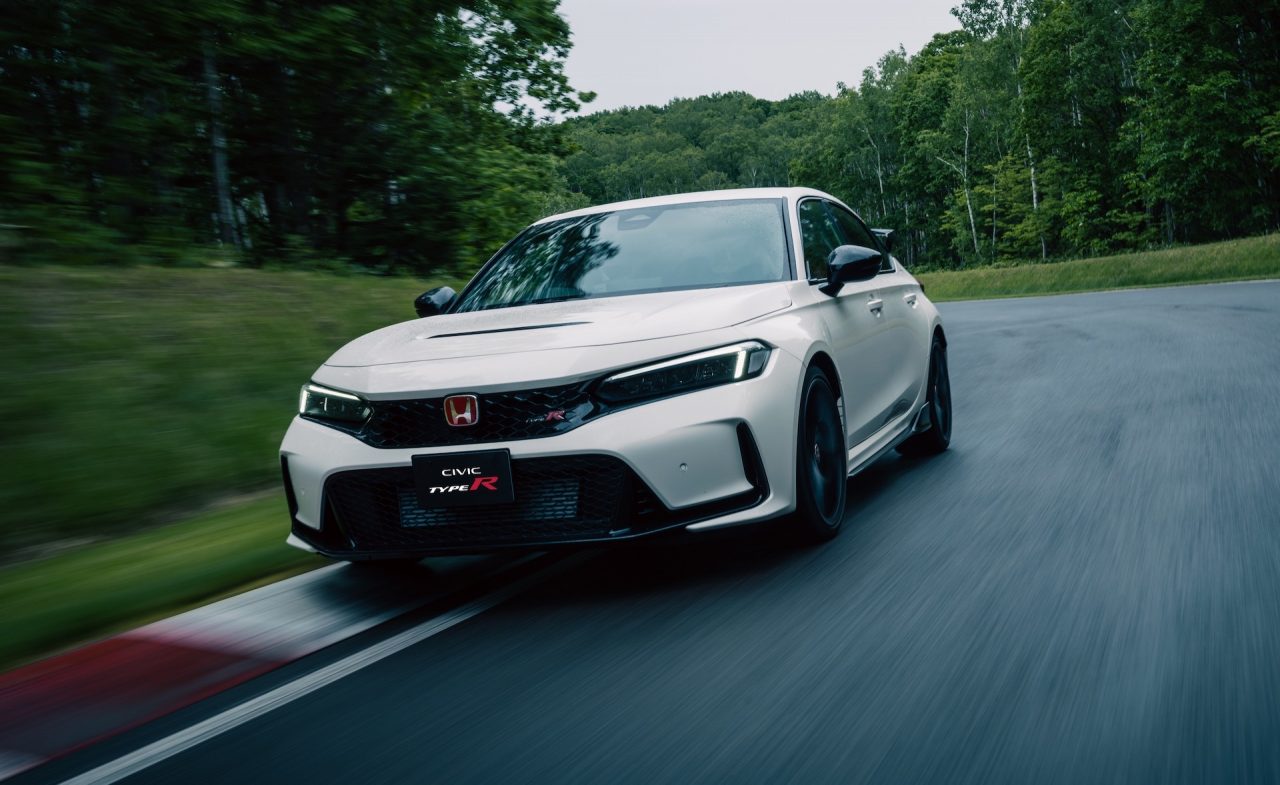How good is this? It’s like living in the turbo era of the 1980s, with a twin-turbo Nissan Z duking it out with the Toyota Supra. All we need now is a new 200SX (Silvia) and Mitsubishi GTO and we’re all set.
This is the new Nissan Z. The successor of a long-running family tradition of sports cars from Nissan, and the younger brother of the outgoing 370Z. Headline attractions are impressive, boasting the most powerful engine ever for a Z car, making it the quickest version yet, while advancements in technology and safety also set new standards for the icon.
Just a single variant is available in Australia, but buyers can choose between a six-speed manual or a nine-speed automatic. A special edition Proto Spec was available, in Ikazuchi Yellow with gold wheels, but the allocation for Australia was sold out back in May.
Prices start from $73,300 for either the manual or auto. That puts a lot of pressure on the Toyota GR Supra, which starts from $86,494, while the segment favourite Ford Mustang will no doubt continue to attract buyers with its starting price of $52,290. (All excluding on-road costs.)
2023 Nissan Z – THE SPECS
Engine: 3.0-litre twin-turbo V6
Output: 298kW@6400rpm / 475Nm@1600-5600rpm
Transmission: 6-speed manual & 9-speed auto
Drive type: Rear-wheel drive, limited-slip diff
0-100km/h (as tested, wet surface): 5.35 (auto), 5.98 (manual)
Tare weight: 1556kg (auto 1589kg)
Official fuel economy: 10.8L/100km (auto 9.8L/100km)
Starting price: $73,300
2023 Nissan Z – THE PACKAGE
What we notice first is that it’s a lot cuter and more compact than it seems on paper/computer screen. It kind of looks like an old Porsche 911 at the back with its gradually sloping roofline, and the rear haunches are nice and muscular. As per tradition this features a hatch lid, or fastback as it was known, with some stacked taillights harking back to the 300ZX.
Various details in the front end are heavily inspired by the classic 240Z, including the headlights and daytime running light theme that pays homage to the circular frames of yesteryear. In the centre is a large rectangular grille. Development chief, Hiroshi Tamura, admits he wanted it to be smaller like on the 240Z. However, it needed to be larger for cooling efficiency.
Nissan offers a range of interesting colours with the new model, including the hero Ikazuchi Yellow making it stand out like a banana on wheels. We love the black contrast roof option, especially paired with the Everest white pearl. From some angles we think there is a bit of 180SX going on, or at least a JDM drift theme.
The interior is a fairly monotone but inviting environment. It is definitely a driver’s cabin, too. The dash is slightly skewed toward the right and there are no back seats at all. It’s a shame the touch-screen is based on the old system from the 370Z, albeit updated to include some new graphics.
It does miss out on sat-nav though, and the functionality and menu sequence is not that great in our opinion. Especially compared with some of the more modern setups out there. The big digital gauge cluster is fancy though, with cool graphics and various display themes that you can toggle through, including a turbo boost gauge. A trio of mechanical gauges sprout out from the centre of the dash.
Passenger comfort is pretty decent for this style of car, but we think the driving position is a bit high. It took us some time to really settle in. The seat adjustment switches are tucked away in an odd position, stuffed down between the seat and centre console. But the seat cushion seems comfortable for decent journeys, even though there isn’t all that much lateral support during hard cornering.
Boot space is pretty poor, at 241 litres, especially compared with the Ford Mustang rival, which offers 408 litres. However, its main competitor, the Toyota Supra, presents a fairly similar 296 litres. The loading space is wide and long, but very shallow. There is some extra space behind the seats for smaller objects.
2023 Nissan Z – THE DRIVE
Out on the road the new 3.0-litre twin-turbo V6 engine is a charm. Although it’s not technically new at all, starting life in the Infiniti Q50/Q60 Red Sport way back in 2016, the ‘VR30’ has that characteristic V6 roar and immediate low-end punch the 350 and 370Z have become renowned for. There is some turbo-lag when you demand full power, but the V6 itself performs quite well before the turbochargers kick in.
The compression ratio is high for a turbo engine, at 10.3:1, which no doubt helps with the initial response. And then at peak power, at 6400rpm, the turbochargers provide up to 17psi or so, according to the on-board boost gauge – we saw it hit around 110-120kpa during full-throttle acceleration. At which point you’ll be really pushed back into your seat by the 298kW shove.
We think it feels more powerful than that, to be honest. We don’t remember the Infiniti Q50 Red Sport pulling quite as hard as this. However, Nissan has managed to keep the tare weight relatively low for a modern car, with the manual standing at 1556kg and the auto rated at 1589kg. This results in a decent power-to-weight ratio of 5.22kg:kW. Perhaps most crucially though, the ratio is not quite as good as the Toyota GR Supra, just. It manages 5.16kg:kW.
Nissan gave us a small section of runway to sample its launch control systems during this first-drive event, which was very exciting. The system comes standard on both the manual and auto. Unfortunately due to Melbourne’s typical rainy weather, we couldn’t extract the full potential. We will be doing our proper acceleration tests later this year.
Even in the wet the Z scampers and powerboats off the line, with its nose high and rear squatting down like tiger ready to pounce. The top end in particular feels really strong. In better conditions, we think it could lay down some properly quick numbers. We’re very keen to see what it can do in our usual tests, including across the quarter mile.
As standard you get a set of forged alloy wheels by Rays Engineering, with four-piston front and twin-piston rear brakes, with red calipers. Although the tyres are quite wide, measuring 255/40 on the front and 275/35 on the back, we think it could do with a higher-spec performance tyre. Traction can be an issue with these standard Bridgestone Potenza S007 items. Especially in the wet.
Both transmission options come with a mechanical clutch-type limited-slip differential to ensure optimum distribution of power to each rear wheel. However, with the traction control left on it easily lights up the rear tyres. It’s a bit skittish, too, suddenly breaking traction. We’re surprised the traction control system lets away so much wheelspin actually, as it seems to be more of a reactive mechanism rather than a proactive tune.
With the traction control off we had some fun experimenting with the chassis and steering response going up a series of tight S-bends. Nissan says there is still some traction control mechanism in place, even when turned off. We think this does cause a slight tank-slapping effect, as it tries to settle the wheelspin. This is all in the wet however, so it will be interesting to see how it responds in dry conditions.
Speaking of corners, the handling is a little sloppy and relaxed for our liking. We’d like the front end to have a firm, tethered feel, but this doesn’t. We’re assuming this is for the sake of comfort, remembering one of its key markets is the USA – they generally favour a softer setup compared with a typical ‘European’ or firm tune.
What this means is the steering is not as precise as some rivals, in our opinion. Nissan uses a proper mechanical steering system, although electronically assisted, and not the strange steer-by-wire setup it uses on various Infiniti models. However, communication is good but not especially precise or sharp in response. On the other hand it is relaxing to drive on the highway, because you can get away with minor steering movements without causing disruptive fidgeting.
Ride comfort is great for a sports car. In fact, it is probably one of the more comfortable coupes currently on the market in this ‘driver’s car’ category. Even after a long stint on the highway we had no issue with fatigue or coming out feeling flustered or more stressed than when we started.
In some ways the new Z does feel like more of a GT car – a grand tourer – than a nimble and darty sports car. The big power does wonders getting up to speed, and the nine-speed auto works well to keep revs down for cruising comfort and fuel economy. The six-speed manual is pretty much carried over from before, while the nine-speed, made by Jatco, is similar to what you’ll find in the new/upcoming Pathfinder.
We experienced some minor shunting in the auto, mainly when closing off the throttle and initially opening it. There seems to be some delay in this process. The manual offers a nice feel and throw action, and it comes with switchable rev-matching like the predecessor. Each gear is moderately tall, making it feel ‘chunky’ and a tad piggish when driving in slower situations.
2023 Nissan Z – THE VIDEO
2023 Nissan Z – THE VERDICT
We adore the styling. We think Nissan has really nailed this one. And we fully understand that recreating a classic or an icon is always a tough job. The interior leaves a bit to be desired, as it is a bit bland and lacks theatre in our view, and it’s disappointing to see a dated touch-screen in such a modern vehicle.
As for a first impressions on the driving character, it’s all about this engine. It really does go hard, and the sound is decent. We think it sounds a bit like a 370Z with an aftermarket exhaust on it. Some raspiness and pops and burbles would be nice. But at least there is a note there. Some bass and a deep undertone.
Nissan says it concentrated on three main focus points in the new Z’s development; “Styling, Performance, and Sound”. And it seems it, as the handling and overall dynamics are the weakest link in our opinion. It’s not below standards but it doesn’t set any new ones in this field.
